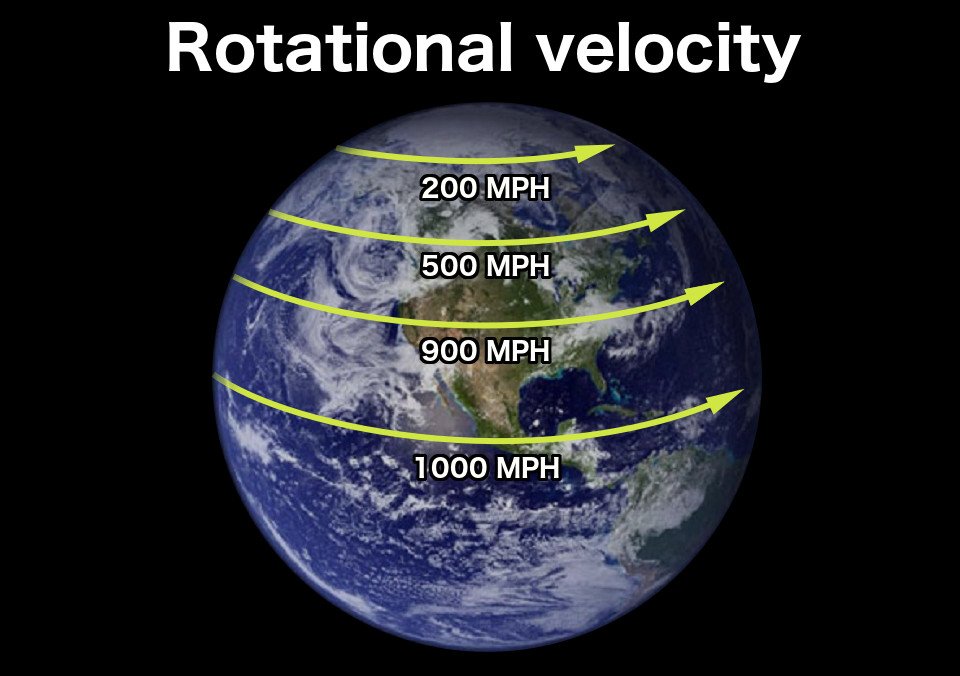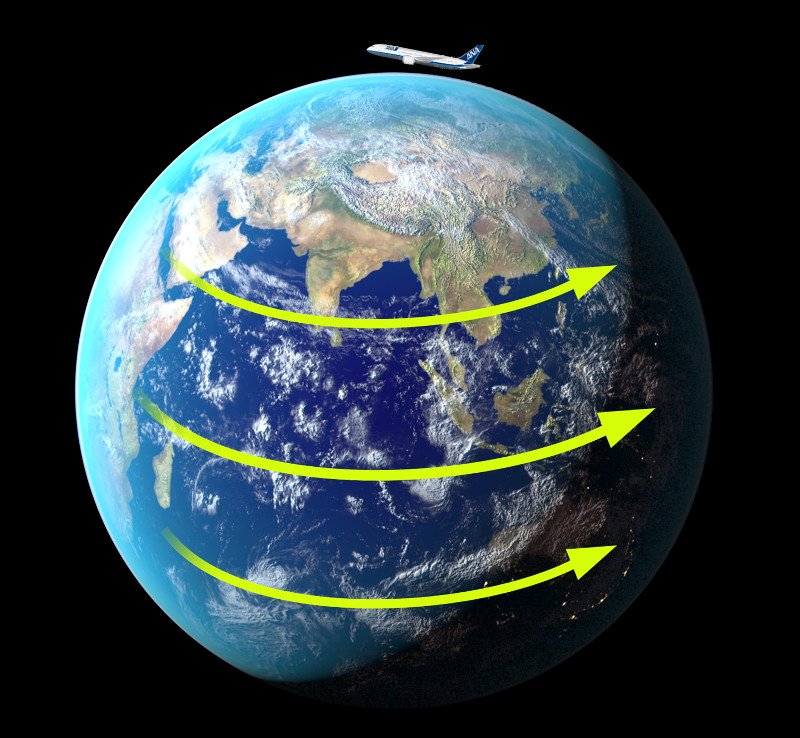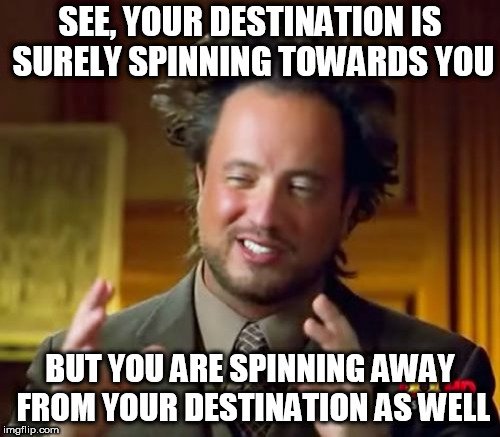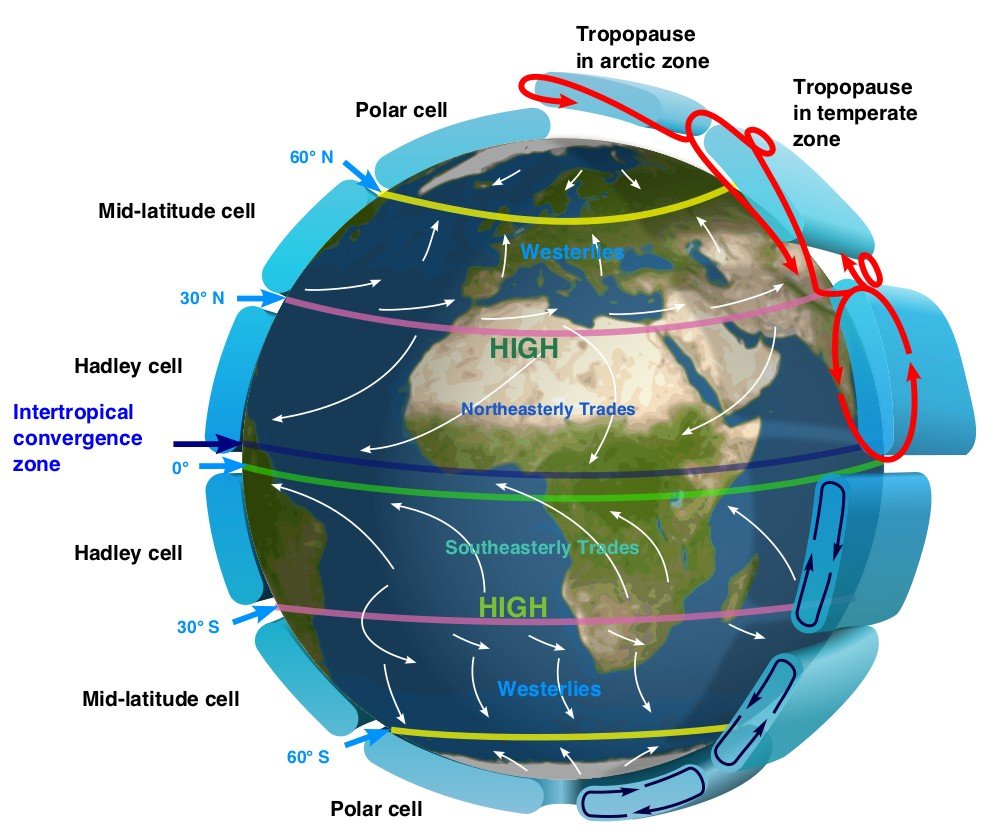Table of Contents (click to expand)
The reason airplane flights take longer when traveling west is because of the different speeds of rotation on Earth. The rotational velocity of Earth decreases as one goes from the Equator to the poles. This means that a place on the Equator will experience higher rotational velocity than a place on the poles. Therefore, it takes longer to fly west than it does to fly east.
If you travel from New York to London, it will take around 6 hours, but when you travel from London to New York, it invariably takes significantly longer.

If you’re a frequent flier, then you may have noticed that flights going from east to west take more time than the the flights traveling from west to east. Do you know the reason behind that?
Furthermore, Earth rotates from West to East. So, from a purely logical standpoint, the travel from east to west should take less time, since we’re in a plane that’s flying towards west, which means that the destination is actually spinning towards us (due to Earth’s rotation).
However, in reality, that clearly doesn’t happen. It takes longer to fly west than it does to fly east. Why is that?
Different Speeds Of Rotation
Earth is spherical… mostly. This shape influences a lot of things, including the seasons, weather conditions, GPS and yes, flight times.
Due to Earth’s spherical shape, different parts of the planet rotate at different speeds. The rotational velocity of Earth decreases as one goes from the Equator to the poles.

A place on the Equator will experience higher rotational velocity due to the fact that it has to cover the longest distance (because its movement will be along Earth’s circumference) within 24 hours, i.e., the length of a day. Since, the time available to cover a complete rotation is fixed (i.e., 24 hours), places on the Equator must rotate faster in order to complete one rotation every 24 hours.
That’s why different places on Earth experience different rotational velocities.
Also Read: What Would Happen If Earth Rotated Faster?
Traveling East Or West
When an airplane takes off from a specific point on Earth, it’s already travelling at the rotational speed of Earth at that point.

In other words, the plane is affected by Earth’s rotation, meaning that it also spins away from its destination as the destination spins towards the plane. Therefore, the net result remains the same, because the plane always has a relative velocity with respect to Earth’s rotation.

This is why the crude logic that traveling west in an airplane ought to take less time because ‘the destination spins towards the plane’ doesn’t hold up.
However, traveling east does take less time than traveling west.
Also Read: Why Don’t Airplanes Hover In The Sky And Let The Earth Pass Beneath Them?
Jet Streams
Jet streams are strong winds that blow around 5-7 miles above Earth’s surface, from west to east. More specifically, these are relatively narrow bands of strong winds that blow in the upper levels of the atmosphere. Although they blow from west to east, their flow often shifts to the south and north.
The speed of these winds can be as high as 200 mph (321 kmph) and they help regulate climate all over the world.

Every moon or planet has global wind whose flow is determined by the way in which the ‘host’ planet/moon moves, and how evenly sunlight falls on it. Earth also has these winds, and because Earth rotates from west to east, jet streams also flow in that direction.
Flights with these jet streams on their tails take less time to reach their destination than those facing these winds head on. Airline pilots navigate into these tunnel-like air patterns, which helps the plane take advantage of the fast-blowing winds, saving both time and fuel (and by extension, money).

That’s why, when airplanes fly from west to east, it takes less time (than it does going east to west), because jet streams help ‘piggyback’ them to their destination, making the flight time shorter.
How well do you understand the article above!

